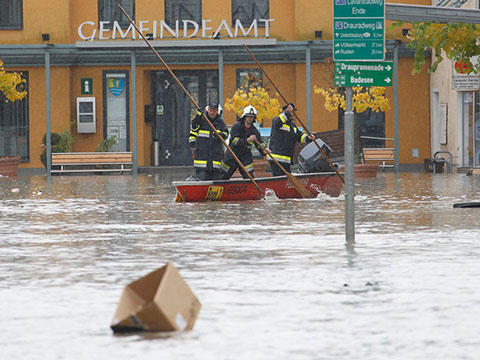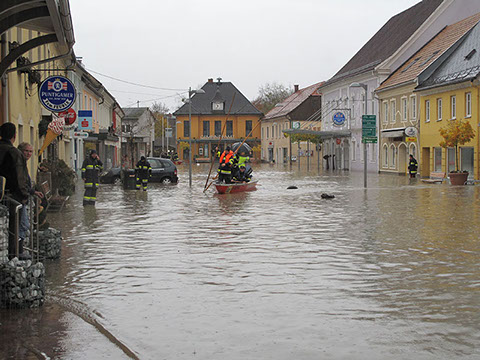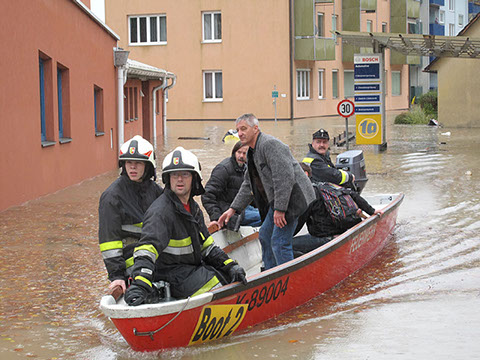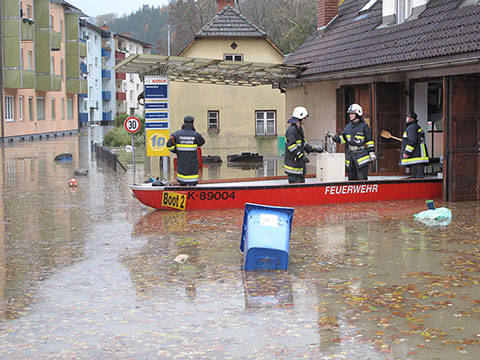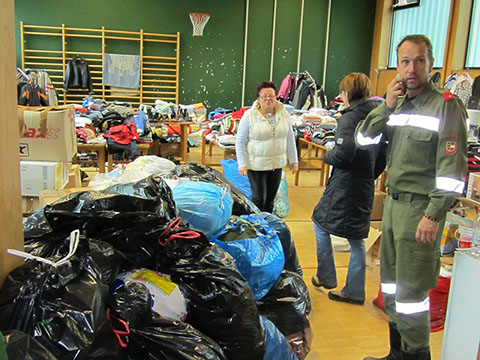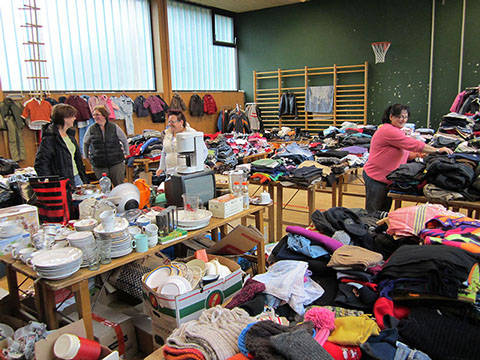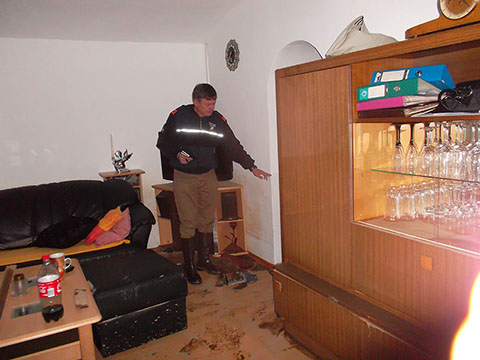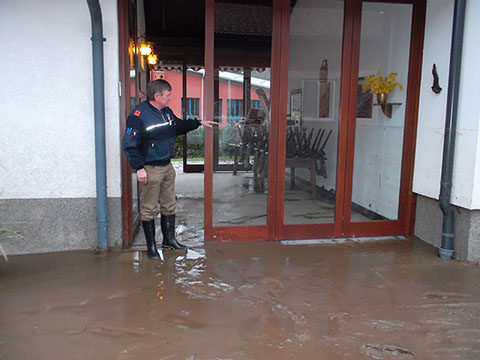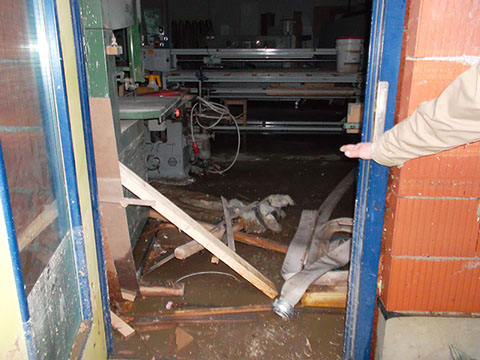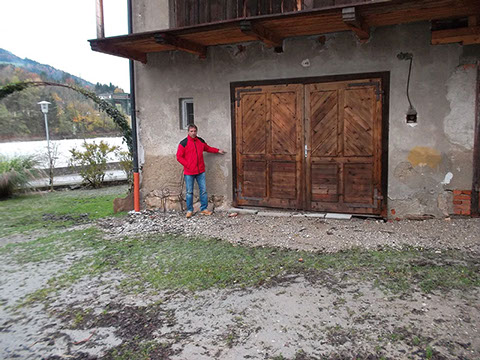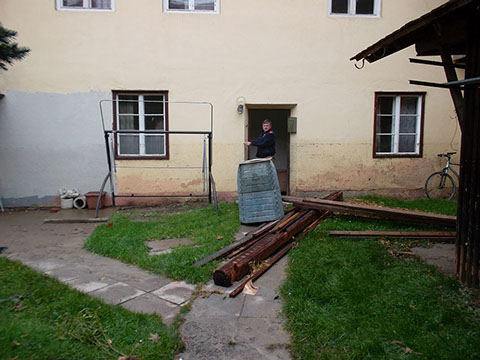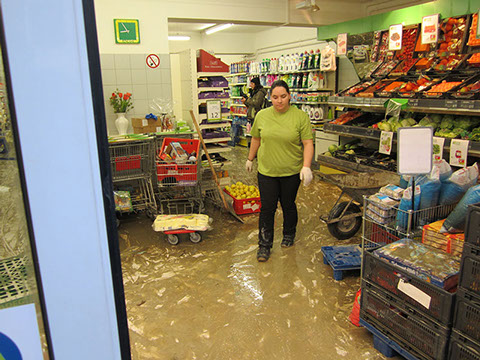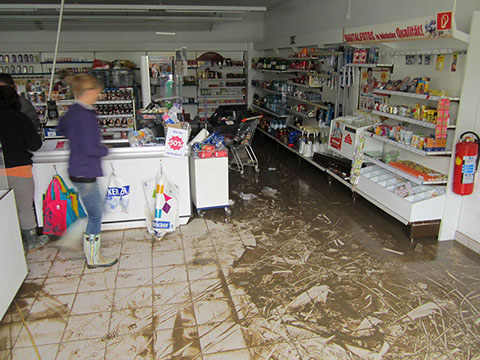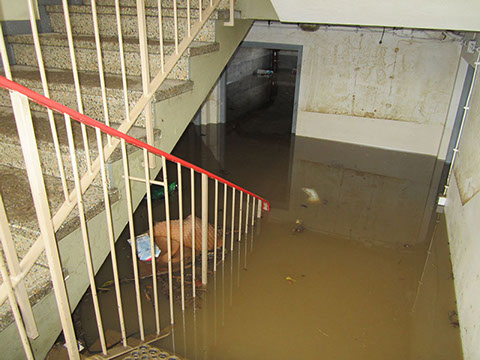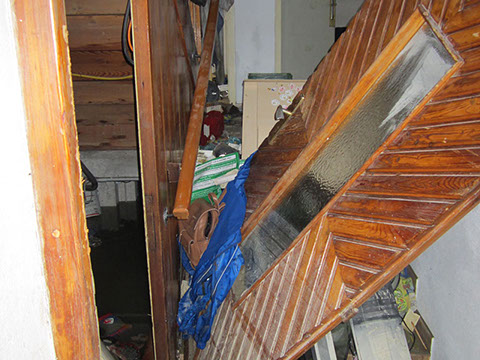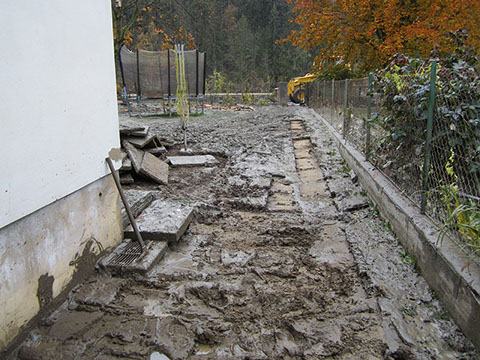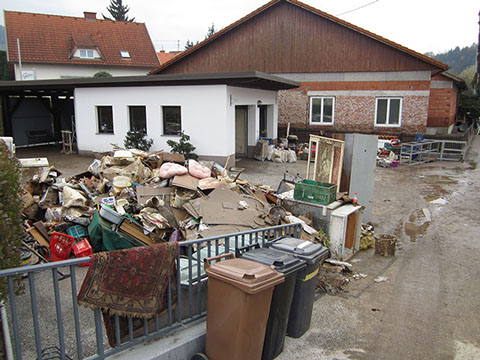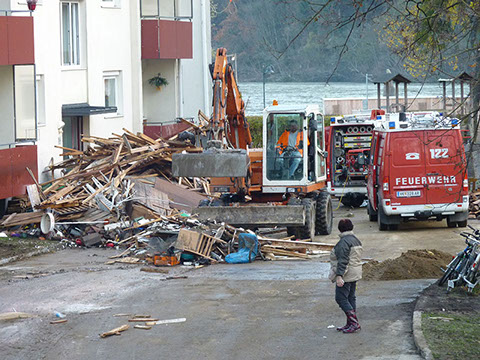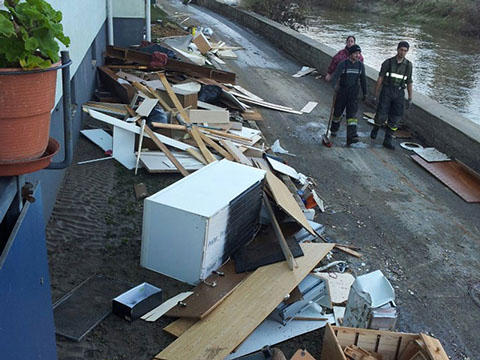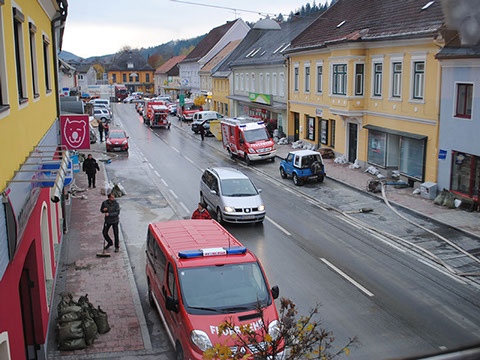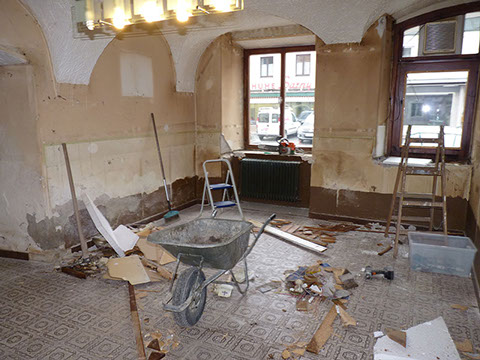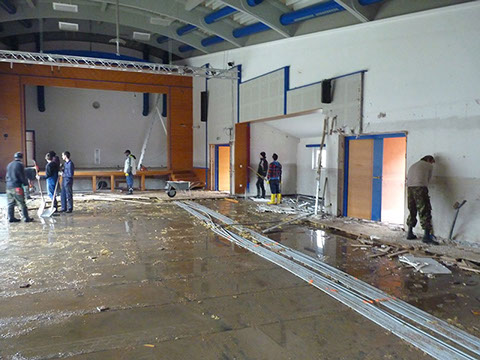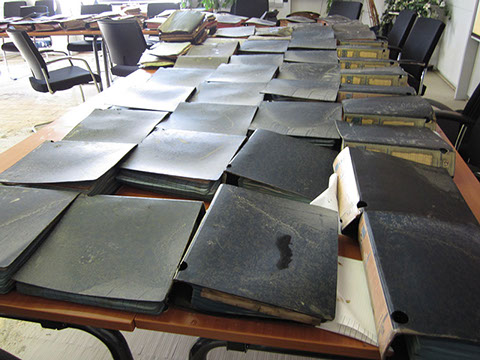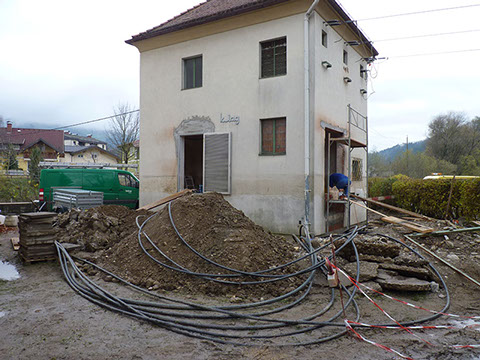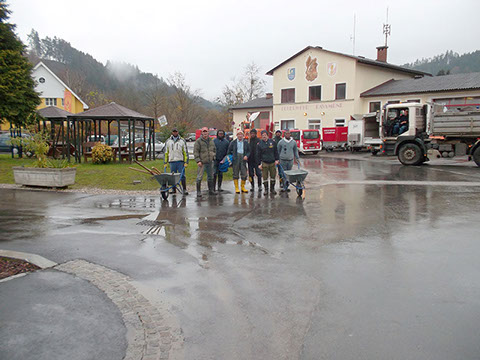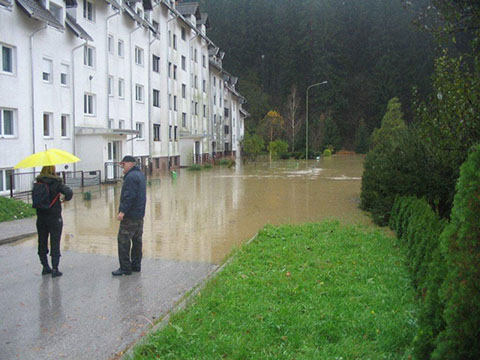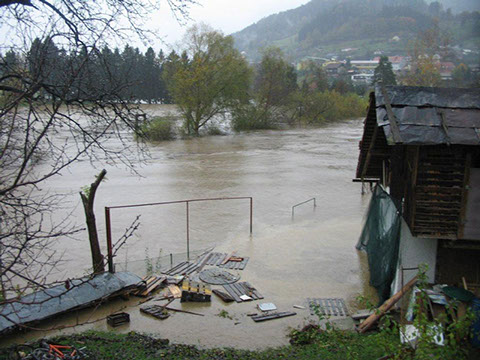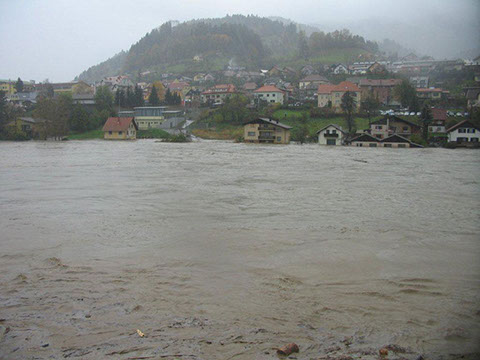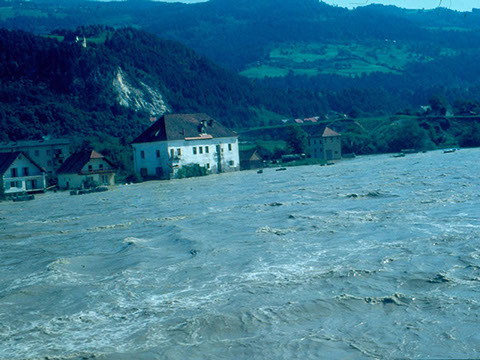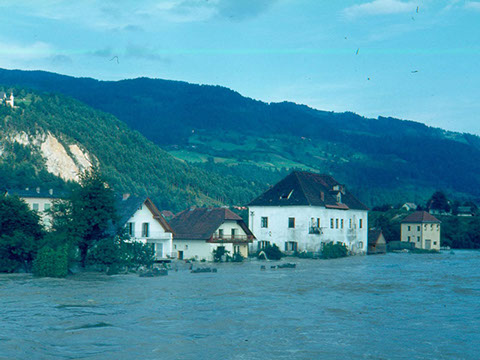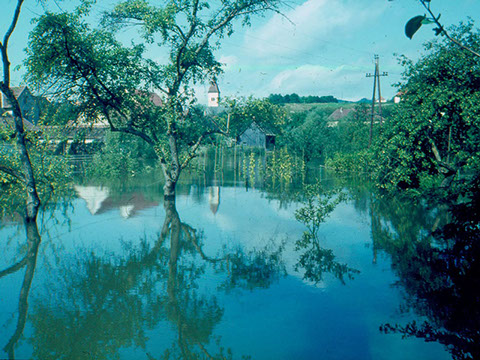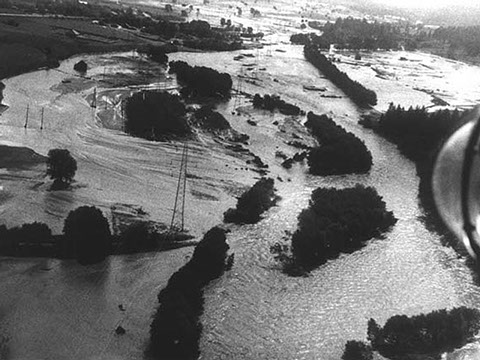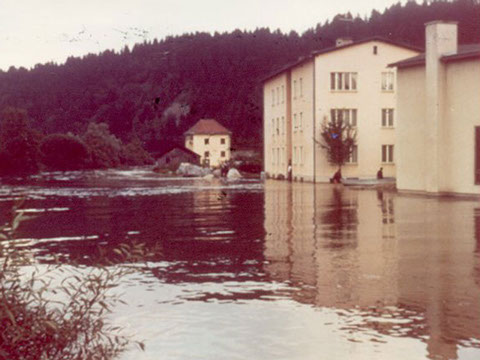When Rain
Leads to
Catastrophe
When Rain Leads to Catastrophe
In the town of Lavamünd in lower Carinthia - where the Lavant flows into the Drau river - heavy rains lasting several days unleashed a catastrophic hundred-year flood that will live long in people's memories. With water levels reaching 6,85m (the average being 2m), the town center was a meter deep in water. The Drau river was carrying nearly nine times its usual volume, and the water flooded the banks in devastating fashion.
240 households were left without electricity, large-scale evacuations were carried out and over 50 people would be homeless for the longer term. With boats from the fire and rescue services, trapped residents were brought to safety in emergency shelters. The fire departments, together with many volunteers, worked day and night to erect barriers against the masses of water in order to control the damage. Vehicles, furniture and garbage swept through the area, flooding public facilities and private homes with muddy water.
Numerous residents of the three thousand strong community lost all their possessions within a few hours and stood aghast before the ruins their lives had been reduced to. The resulting damages are estimated to run into the millions.
Video
2:40 min
No Hope
Without Help
This extraordinary event also triggered a wave of sympathy and solidarity. In addition to the emergency services of the Austrian Armed Forces and the 18 fire departments of the region, hundreds of volunteers from Carinthia and the neighboring regions struggled to salvage whatever was salvageable and worked tirelessly in the face of the natural disaster. From communities around the area there were offers to provide food to the victims or to house them privately and residents received contributions from all over the country. The flood victims who were brought to safety were sheltered in schools and attended to by the Red Cross.
A large-scale fund-raising campaign called "Neighbors in Need" was initiated by the Austrian Broadcasting Corporation through which many people from Carinthia and all of Austria provided "urgently needed assistance," and a large sum of money was immediately given as an emergency relief measure. The devastated victims, some of whom lost all of their possessions, were grateful for every contribution and helping hand.
On the 5th of November 2013, one year after the hundred-year-flood, the Lavamünd market town organized a celebration in honor of the assistance and support received in the wake of the catastrophe.
Pictures
As the Water
Receded, …
… the Big Clean-Up Began
After the all-clear was given concerning further downpours, the crisis slowly subsided. The water found an outlet and the extent of the destruction only then became clearly visible. Flooded basements and ground floors, demolished restaurants and stores and copious amounts of mud inflicted serious damage on masonry and public spaces. Retaining walls had to be erected, and flood debris was removed with private vehicles and boats. The residents who got away with no more than a scare, and those who could no longer return to their homes proceeded to assist the clean-up crews in order to clear the streets, thereby making room for further assistance. Tons of damaged goods and belongings had to be disposed of before the exhausting task of cleaning up could begin. People both young and old were involved in clearing up the damage. After barely two weeks of continuous work, the official clean-up work was concluded. For many, however, getting back to normal life was a much longer process. Returning to some dwellings was still out of the question due to the mud and water that had damaged electricity and made furniture unusable. Negotiations with insurance companies were taken up and the question of blame for lack of safety regulations was a major concern for those involved.
Pictures
Neighboring
Regions Were
Not Spared
The Drau floods of November did not only overwhelm the Carinthian town of Lavamünd, but also ravaged dozens of villages in numerous cities along the Drau in Slovenia. There, too, people lost their homes and suffered property damage considerably farther inland.
Pictures
Remembrance
The effects of the flood were catastrophic and are a significant concern for inhabitants of the area to this day. Older residents of Lavamünd still have a decades-old deluge in their memory, for in 1966 the Lavant and Drau flowed over the banks after a heavy rainfall and flooded the Drau river lands and parts of the city center. A high-water mark at the mouth of the Drau today - next to the old floodmark - shows the cataclysmic levels of 2012. This project is dedicated to the events of November 2012, to its victims, and to the emergency services and volunteers, without whose exemplary solidarity it would not have been possible to overcome a crisis of such magnitude.
Pictures
Epilog
Lavamünd today
The external damages have almost completely been repaired, the façades have been restored and the last flood victims have moved into new homes. What remains is the shock at how quickly natural events can catch one off guard, as well as the question of the co-responsibility of the VERBUND, Austria's largest electricity provider, in such a catastrophe. The state of Carinthia, the town of Lavamünd and 140 civilians have united in a class action lawsuit. The trial is pending.
Site notice
Responsible for the content
Jochen Traar
As part of an art in architecture project supported by the state of Carinthia
Contact
St. Veit im Jauntal 14
A- 9123 St. Primus
office@traar.com
Visual concept and realization
Leopold Šikoronja, Büro für Marke und Gestaltung
Photos and videos provided by the town of Lavamünd
Texts
Ulli Sturm
Translations
English: Christian Villano
Italian: Vera Radinger- Sapelza
Slovenian: Gregor Krištof
Many thanks to everyone supporting the project, in particular to all the photographers and filmmakers.
